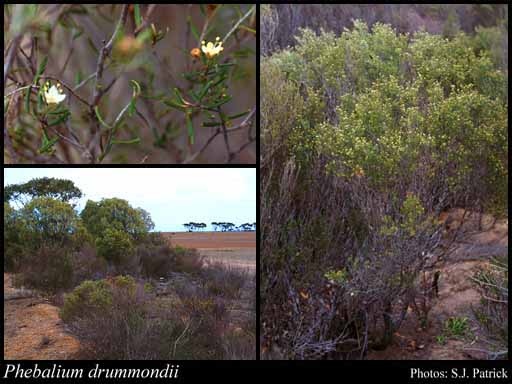- Reference
- Fl.Austral. 1:343-344 (1863)
- Conservation Code
- Priority Three
- Naturalised Status
- Native to Western Australia
- Name Status
- Current
Upright shrub, 0.6-1.5 m high. Fl. yellow, Jul to Sep. Gravelly sandy or clayey soils. Flats, roadsides.

Scientific Description
Shrub, spines absent, +/- cylindrical in cross-section, covered in hairs or scales, the hairs peltate (umbrella-like) scales. Leaves alternate, simple, 3-4.5 mm long, 1-1.5 mm wide, flat, the margins flat, covered in hairs or scales, with stellate (star shaped) hairs or peltate (umbrella-like) scales; stipular excrescences absent. Flowers in terminal umbels; pedicels 2-2.6 mm long; calyx present, smooth, without distinct raised glands, covered in hairs or scales; corolla yellow, petals five, 3-4 mm long, imbricate (overlapping), free, lepidote (with scales); stamens twice as many as petals, 2-4 mm long, smooth, glabrous; anthers 1-2 mm long, without an appendage; style 4.5-5.5 mm long, glabrous. Flowers in July, August and September. Occurs in the Eremaean and South-West Botanical Province, in the Coolgardie, Avon Wheatbelt and Mallee IBRA region(s). Conservation Code: Priority Three (P3).
Distribution
- IBRA Regions
- Avon Wheatbelt, Coolgardie, Mallee.
- IBRA Subregions
- Katanning, Merredin, Southern Cross, Western Mallee.
- Local Government Areas (LGAs)
- Coolgardie, Corrigin, Cunderdin, Dowerin, Dumbleyung, Kondinin, Koorda, Lake Grace, Mount Marshall, Mukinbudin, Yilgarn.